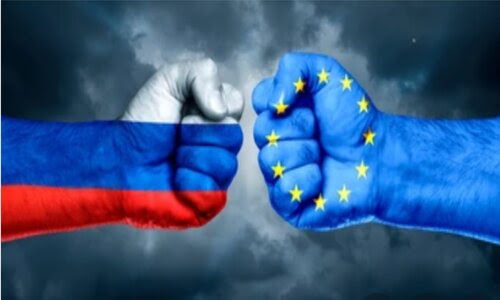
Young Men Returning To Church – Why Aren’t Young Women Joining Them?
The New York Times reported last fall that, for the first time in American history, men now outnumber women in churches. The trend is especially pronounced among twenty-somethings.
In recent months, at two synods for different diocese of the Anglican Church of North America, I encountered a significant number of impressive young men, mostly in their twenties. In one case, they humbly served the clergy and leadership throughout the multi-day proceedings. In the other, they attended a local parish but chose to join and stay for the entirety of an exceptionally long ordination service.
I see something similar at my church, where there is often a row of single, young men, faithful, spiritually hungry, and interested in cultivating a deep, personal faith. I should note, that there is no corresponding row of young women, nor did I see similar numbers of young women at either of the aforementioned synods.
Though these stories are anecdotal, there is growing evidence of a “quiet revival” of Christian belief among Gen Z men. The New York Times reported last fall that, for the first time in American history, men now outnumber women in churches. The trend is especially pronounced among twenty-somethings.
Last year, a survey by the Public Religion Research Institute found that 39% of Gen Z women identify as religiously unaffiliated, compared with just 31% of men. Among white evangelicals, young men had begun showing significantly more religiosity than women.
Newer data from the U.K. shows a surprising reawakening across the pond, where church attendance overall has long been much lower than in the U.S. In April, the Bible Society reported that church decline in England and Wales “has not only stopped, but the Church is growing, as Gen Z leads an exciting turnaround in church attendance.”
This turnaround happened in a short time. In 2018, only 4% of 18- to 24-year-olds in the U.K. attended church regularly. By last year, that number had quadrupled. Among 25- to 34-year-olds, attendance more than tripled, raising the overall rate from 8% to 12% of the population.
Though still a low number, it represents a historic reversal of the country’s century-long de-churching. Like in the U.S., young men in the U.K. are leading the return to church. Among the 18 to 24 age group in the Bible Society survey, 21% of men attended at least once a month, compared with just 12% of women the same age.
As statistician Ryan Burge wrote on X, “It seems very clear now that men are more likely to be regular church attenders than women. And those gaps are the largest among the youngest adults.” He also pointed out that these numbers are not due primarily to immigration, as the white-only sample showed the same trends.
Why are young men returning to church? And why aren’t young women joining them? The Times pointed to a shift in cultural and political attitudes among men that seems to correspond with their search for traditional faith. As young women have skewed increasingly progressive, young men are now much more likely to call themselves politically conservative.
In fact, the partisan gap between men and women has doubled in the past 25 years. Surprisingly, young men are also more likely than young women to say they want to have children someday.
One pastor told The Times that young men “are looking for leadership, they’re looking for clarity, they’re looking for meaning.” Another college minister at the University of California-Irvine suggested that religion is perceived as traditional, and Christianity in particular as the “one institution that isn’t formally skeptical of [young men] as a class.”
This trend also corresponds to what Justin Brierly has called the “Surprising Rebirth of Belief in God” among high-profile secular thinkers. It’s a reminder that we can’t predict where the Spirit will blow, that narratives of inevitable religious decline are far from certain, and that we still live in the same world where the Great Awakenings occurred, the Wesley brothers, Whitefield and Spurgeon preached, and where St. Peter saw 3,000 converted in a day. It’s also a reminder that the same God they all served is at work in the world.
Still, the growing disparity between men and women poses significant challenges. The reversal in the historic tendency of church to be mostly female is proof of how our culture has lied to young women. And it won’t help the decline of marriage or birth dearth much either.
It’s also possible that some young men are returning to church for the wrong reasons. They still need to hear Christianity taught accurately and in its entirety. Church should not be sold to them as a “based” social club, but as a place that belongs to the God of the universe, and the faith as a way of seeing all of life and reality in surrender to Christ’s loving lordship.
Even as we praise God for this “quiet revival,” we should ask how we can fan the flames of belief in Gen Z and make disciples rather than just cultural converts. God is up to something. We should be eager to play our part in His providential movement in young hearts.
Signs of the Times
We’re One Deepfake Away From A Digital Point Of No Return

A quiet but deeply unsettling breach in diplomatic integrity recently occurred, and it should serve as a thunderclap warning to the rest of us: we are just one deepfake away from an international crisis that could reshape how we live, work, and move through the online world.
In June 2025, foreign officials received Signal messages from what appeared to be U.S. Secretary of State Marco Rubio. These weren’t generic phishing attempts or obvious scams. They included AI-generated voice messages, realistic branding mimicking “state.gov” communication, and highly credible language. The targets? A member of Congress, a U.S. governor, and at least three foreign ministers.
Though the U.S. State Department was quick to downplay the event, a classified diplomatic cable revealed serious concern: not only had high-level foreign policy contacts been tricked, but the incident reflected a rapidly evolving threat–AI-driven impersonation with real-world influence. What was once the stuff of spy thrillers is now a credible method of social engineering that could tip the balance in diplomacy, markets, or even national security.
Deepfakes: From Curious Toy to Dangerous Tool
The Rubio impersonation is not an isolated case. Earlier this year, a finance manager at a multinational firm in Hong Kong was duped into transferring $25 million after joining a Zoom call filled with familiar colleagues–none of whom were real. Each was generated by AI, complete with facial expressions, gestures, and matching voices. By the time the fraud was uncovered, the money had vanished.
These examples illustrate a terrifying truth: synthetic deception isn’t just possible–it’s effective.
AI-generated videos and audio clips have already been used to manipulate public opinion, spread disinformation, and exploit individuals.
And now we’ve crossed into even more serious territory: diplomatic manipulation.
The Potential for Catastrophe
If one deepfake can trick foreign ministers, imagine what a truly sophisticated campaign could do. Consider these hypothetical–but entirely plausible–scenarios:
Stock Market Manipulation: A deepfake video of a Federal Reserve official announcing a surprise rate hike goes viral. Automated trading bots react within seconds, tanking markets before a correction can be issued. Billions are lost in minutes.
Military Escalation: A video surfaces of a world leader declaring war–seemingly verified, spreading across social platforms before authorities can deny it. One misinterpreted signal could prompt a retaliatory strike, costing lives.
National Emergencies: A deepfake emergency broadcast warns citizens to evacuate a major city due to a fake nuclear threat. Panic erupts. Infrastructure is overwhelmed. Real lives are endangered over a fabrication.
Criminal Fraud & Pranks: A TikTok creator uses AI to impersonate a celebrity and “confesses” to a crime or leaks a scandal. The video goes viral, sponsors are dropped, and reputations destroyed–all for clicks and ad revenue.
We’ve already seen how easily people fall for impersonations. What happens when these tools are used in real-time, at scale, with malicious intent?
What Comes Next: Digital ID as the “Solution”
Here lies the chilling part. When a catastrophic deepfake finally hits–when it shakes markets, prompts military action, or triggers a crisis–the public will demand a fix. The most likely answer? Centralized digital identity verification.
Governments and tech firms are already preparing this future. The European Union is pushing its Digital Identity Wallet, intended to unify access to banking, healthcare, and government services. In the U.S., biometric authentication and encrypted digital credentials are gaining traction as solutions to fraud.
After a major deepfake incident, such systems won’t be optional–they’ll be mandatory. Pitched as a matter of “national security” or “public trust,” centralized ID systems will likely be implemented across platforms. You’ll need to verify your identity not just for banking or travel–but to post, comment, email, or even access parts of the internet.
This is how freedoms shift–not with a vote, but with a crisis.
A Digital Point of No Return
The Rubio deepfake incident is a warning shot. It shows us that AI-generated deception isn’t speculative anymore–it’s here. It can reach the halls of power. It can fool governors, foreign leaders, and possibly you.
We are one major incident away–one forged message, one fake voice, one viral lie–from a digital catastrophe. And when that moment comes, the global response will fundamentally reshape our rights, our privacy, and our online presence.
We will be told it’s for our safety. And many will cheer.
But the deeper truth is this: what we cannot trust, we will try to control. And in that effort, we may surrender more than we expect.
So the question is no longer whether a deepfake could cause a crisis. It’s what we’ll become after it does.
Gog and Magog Update
Europe On Edge: Five Ways The EU Is Preparing For Potential War With Russia

Perhaps most alarmingly-and most revealing-is the psychological transformation taking place in many European societies. Defense ministers now speak of “mental preparedness” for war. The public, for its part, is beginning to absorb the message.